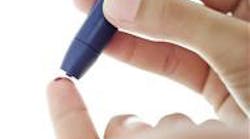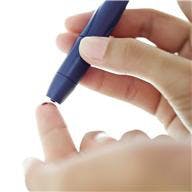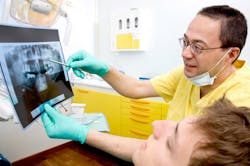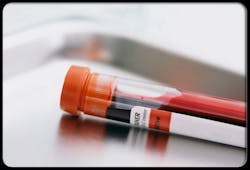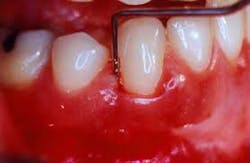Diabetes is a group of diseases marked by high levels of blood glucose resulting from defects in insulin production, insulin action, or both. Diabetes can lead to serious complications and premature death, but people with diabetes can take steps to control the disease and lower the risk of complications.(1) These are the current diabetes statistics.(1) • 25.8 million Americans have diabetes — 8.3 percent of the U.S. population. Of these, 7 million do not know they have the disease. • In 2010, about 1.9 million people ages 20 or older were diagnosed with diabetes. • The number of people diagnosed with diabetes has risen from 1.5 million in 1958 to 18.8 million in 2010, an increase of epidemic proportions. • It is estimated that 79 million adults aged 20 and older have pre-diabetes. Pre-diabetes is a condition where blood glucose levels are higher than normal but not high enough to be called diabetes. Studies have shown that by losing weight and increasing physical activity people can prevent or delay pre-diabetes from progressing to diabetes.
Diabetes in America, 2nd Edition, is a 733-page compilation and assessment of epidemiologic, public health, and clinical data on diabetes and its complications in the United States.(2) It was published by the National Diabetes Data Group of the National Institute of Diabetes and Digestive and Kidney Diseases, National Institutes of Health, Bethesda, MD. The book contains 36 chapters organized in five areas: the descriptive epidemiology of diabetes in the United States based on national surveys and community-based studies, including prevalence, incidence, sociodemographic and metabolic characteristics, risk factors for developing diabetes, and mortality; the myriad complications that affect patients with diabetes; characteristics of therapy and medical care for diabetes; economic aspects, including health insurance and health care costs; and diabetes in special populations, including African Americans, Hispanics, Asian and Pacific Islanders, Native Americans, and pregnant women.(2) Chapter 23 is Oral Complications in Diabetes by Dr. Robert Genco and Dr. Harald Löe.(3) We know that having diabetes increases the risk of many systemic and oral diseases. Orally, risk in increased for dental decay, periodontal disease, oral infections, and abscesses, to name a few. In a recent study, a field trial was assessed for the viability of screening for diabetes and prediabetes in dental practices and in a community health center.(4) Dental patients 45 years and older who were unaware of their diabetic status had an evaluation for diabetes risk with an American Diabetes Association Diabetes Risk Test and with hemoglobin (Hb) A measurement. The American Diabetes Association (ADA) Diabetes Risk Test is available online and takes you through a number of questions, such as your blood pressure status, your age and sex, family history, ethnicity, exercise status, and Body Mass Index (BMI).(5) My personal risk was low, 3 out of 10.
Participants in the study with an HbA level of 5.7 percent or greater were referred to their physicians for diagnosis. HbA1c is a lab test that shows the average level of blood sugar (glucose) over the previous 3 months. It shows how well you are controlling your diabetes.(6) An HbA1c of 5.6% or less is normal. The following are the results when the HbA1c is being used to diagnose diabetes: Normal - Less than 5.7%; Pre-diabetes - 5.7% to 6.4%; and Diabetes - 6.5% or higher.(6) The study showed that screening for prediabetes and diabetes is practicable in a dental office, with acceptance by the dentist and dental office staff members, patients’ physicians and patients.(4) Patients from the community health center demonstrated good compliance with referrals to physicians. Compliance was poor among those in the private dental offices.
So what does that mean for you in your office? Screening for diabetes and prediabetes in the dental office might be a helpful tool and be a benefit to patients. It might also encourage interprofessional collaboration in order to develop a chronic care model where health care professionals can work together to provide patient-centered care.(4) Another study showed that a high percentage of undiagnosed type 2 diabetes and prediabetes among patients visiting dental clinics, compared with that reported in the medical literature. The authors stated that further studies with a lager sample size are needed to confirm these results.(7) While a finger prick is usually used for a blood draw, the results of a 2002 study suggested that blood oozing during routine periodontal examination may be used for diabetes mellitus screening in a dental office setting.(8) A 2012 study showed that Blood Gluscose Testing (BGT) was well received by patients and practitioners, and the results support the feasibility of implementation of BGT in community dental practices. Improved diagnosis and control of DM may be achieved through implementation of BGT in community dental practices.(9)
As many people who are at risk for diabetes visit a dental office regularly, the dental hygiene or dental visit could be a useful opportunity to conduct an initial diabetes screening. This is an important step in identifying those patients who need follow-up testing to diagnose the disease. The ADA guidelines recommend diabetes screening for people at least 45 years of age with a body mass index (BMI) of 25 or more, as well as for those under 45 years of age with a BMI of 25 or more who also have at least one additional diabetes risk factor. We can potentially save lives!
References 1. National Diabetes Education Program. The Facts About Diabetes: A Leading Cause Of Death in the U.S. http://ndep.nih.gov/media/fs_gensnapshot.pdf. 2. http://diabetes.niddk.nih.gov/dm/pubs/america/contents.aspx. 3. http://diabetes.niddk.nih.gov/dm/pubs/america/pdf/chapter23.pdf. 4. Genco RJ, Schifferle RE, Dunfod RG, Falkner KL, Hsu WC and Balukjian J. Screening for diabetes mellitus in dental offices: A field trial. JADA 2014; 145 (1):57-64. 10.14219/jada.2013.7. 5. http://www.diabetes.org/are-you-at-risk/diabetes-risk-test/. 6. http://www.nlm.nih.gov/medlineplus/ency/article/003640.htm. 7. AlGhamdi AS, Merdad K, Sonbul H, Bukhari SM, Elias WY. Dental clinics as potent sources for screening undiagnosed diabetes and prediabetes. Am J Med Sci. 2013 Apr;345(4):331-4. doi: 10.1097/MAJ.0b013e318287c96c. 8. Beikler T, Kuczek A, Petersilka G, Flemmig TF. In-dental-office screening for diabetes mellitus using gingival crevicular blood. J Clin Periodontol. 2002 Mar;29(3):216-8. 9. Barasch A, Safford MM, Qvist V, Palmore R, Gesko G, and Gilbert GH. Random blood glucose testing in dental practice: A community-based feasibility study from The Dental Practice-Based Research Network. The Journal of the American Dental Association (March 1, 2012) 143,262-269. Gregg H. Gilbert, DDS, MBA, for The Dental Practice-Based Research Network Collaborative Group.